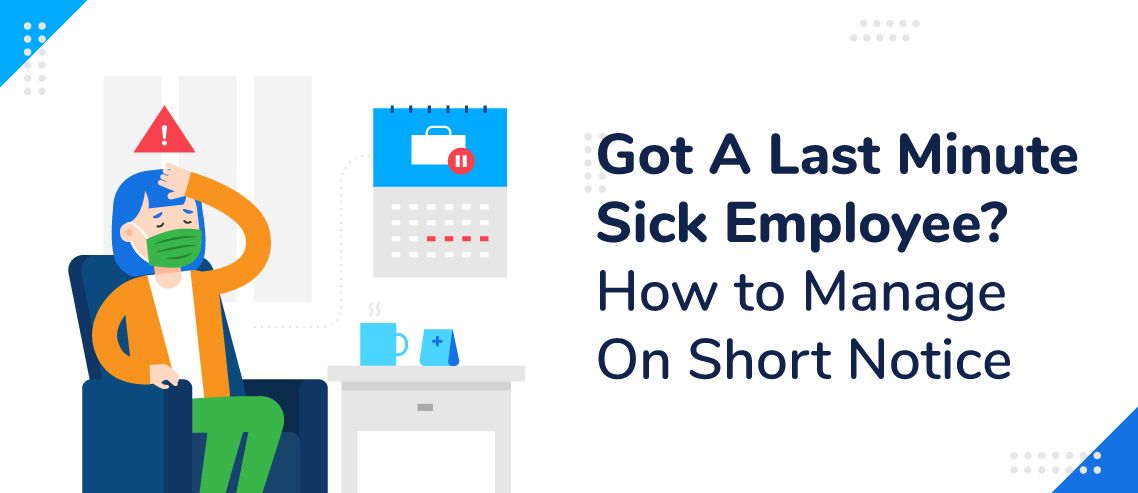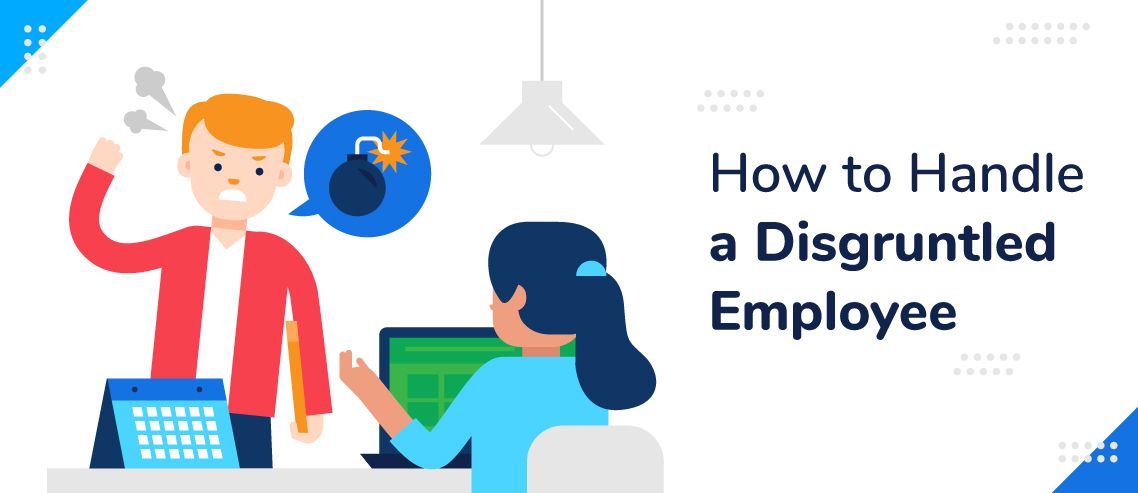Got A Last Minute Sick Employee? How To Manage On Short Notice

As a business owner or manager, one of your most complicated jobs is handling employee scheduling.
This is made even harder when an employee calls in sick right before a scheduled shift.
When your employees call in at the last minute, it’s frustrating.
While we understand that last minute absences are often unavoidable, and you certainly don’t want sick employees coming to work and getting everyone else sick, last minute phone calls can throw your entire day off.
In this article, we look at what you can do if you’ve got a last minute sick employee. We’ll discuss how to manage on short notice.
Have Job Descriptions Handy
If you run a small company, knowing who can step in for your sick employee isn’t hard. But, if your company is larger, you want to look at your job descriptions to see who can work for your absent staff member.

Use Scheduling Software
If you use an online scheduling software like ZoomShift, you can see at a quick glance who might be available to work your sick employee’s shift.
Software that is accessible from any location makes swapping out schedules quite easy. So, your job can be handled promptly and without problem.
Your other staff members can also swap shifts on their own.
Oftentimes, if you’re using online scheduling software like ZoomShift, you can stay out of the mix. Let’s say your employee calls in sick. You can send the team member to the software where they can contact another employee to see if they’ll cover the open shift.
It is true that employees get sick. And, you don’t want them working. But, what do you do if you have employees who call in sick, and you know they aren’t sick.
Let’s take a look at what to do about these employees so you aren’t having to manage on short notice.
Look for a Pattern
If you’re using ZoomShift, you can look for a pattern of absenteeism. For example, you may notice that Bob calls in sick the second Friday of each month, or that Gloria is sick two days at the end of each month.
Finding a pattern of behavior opens the door for you to have a conversation with your employee.
You need to address the issue head on and find a way to solve it. Bob and Gloria probably don’t want to lie to you, but they don’t know how to get out of work.
If they have a valid reason, offer to switch their schedule around to accommodate the days they usually call in sick. Explain that they can’t do that any longer.

Have a Procedure
Most employee problems can be handled as long as you have a procedure in place.
Your employee manual should lay out your entire employee absenteeism policy. It should specify a certain number of allowed sick days and whether they are paid or unpaid.
Your policy should also state the following:
• Whether they should text or call in their illness.
• To whom they should report it.
• Whether the days are paid or unpaid.
• How much notice they must give.
• Who is responsible for finding a fill-in? Who finds the sub – the employee or the manager?
• If a doctor’s note is required. Note: if employees are sick for three days, a doctor’s note is usually required.

Review the History
If you have an employee who calls in sick on a consistent basis, it’s time to look at his past employee reviews.
Does he have performance issues? Is he constantly in the middle of conflicts? Does he meet his deadlines? Has he been caught in a lie?
Unfortunately, you may find it’s time to let the employee go.
But, make sure you’ve documented all the employee’s problems and missed days.
You’ll want to know your company’s discipline policy and follow the steps. These usually begin with a verbal warning, followed by a written warning, then suspension without pay and finally, termination.
Revise Your Time Off Policy
Some companies have separate vacation and sick leave policies. Sometimes this kind of set up causes employees to call in sick when they aren’t.
For example, if they’ve used up their 14 days off, but they need to go out of town, they may call in sick because they don’t have any more vacation time, but they do have sick leave.

If you are combining them, make sure you are sticking to your city and state laws regarding paid sick time. Sometimes, they won’t let you combine them.
Final Thoughts
Forbes tells us that sick days cost U.S. employers more than $576 billion annually.
Of that amount, nearly 40% of it comes from lost productivity due to absent employees or employees who come to work but don’t perform at their best because they’re sick.
While you don’t want employees coming to work if they’re sick, you do have to be prepared when they call in at the last minute. Have a back-up plan and use a scheduling software like ZoomShift to help you manage employee schedules.
Online software can help facilitate last minute changes with ease and ensure your employees can swap shifts from any location.
Finally, make sure you have a system in place and that your employees know what steps they need to take when calling in sick. Do they call you, another manager, or go straight to their scheduling software?
Set up a policy in writing so everyone is clear on the procedure to avoid any miscommunication.
Are you ready to leverage the power of ZoomShift to help your employees swap schedules? Smart business owners are freeing up their time by using employee scheduling and timeclock software. Contact us today to start your free trial and get started.
JD enjoys teaching people how to use ZoomShift to save time spent on scheduling. He’s curious, likes learning new things everyday and playing the guitar (although it’s a work in progress).



